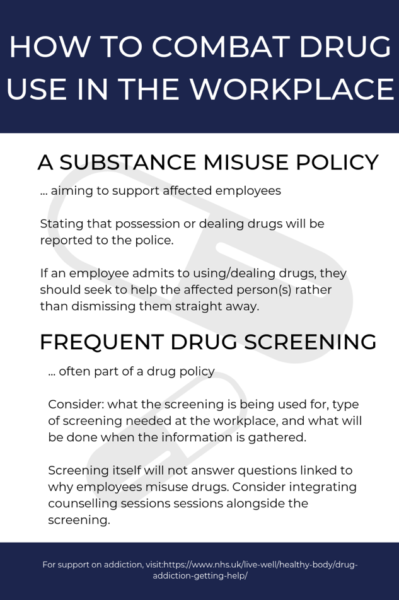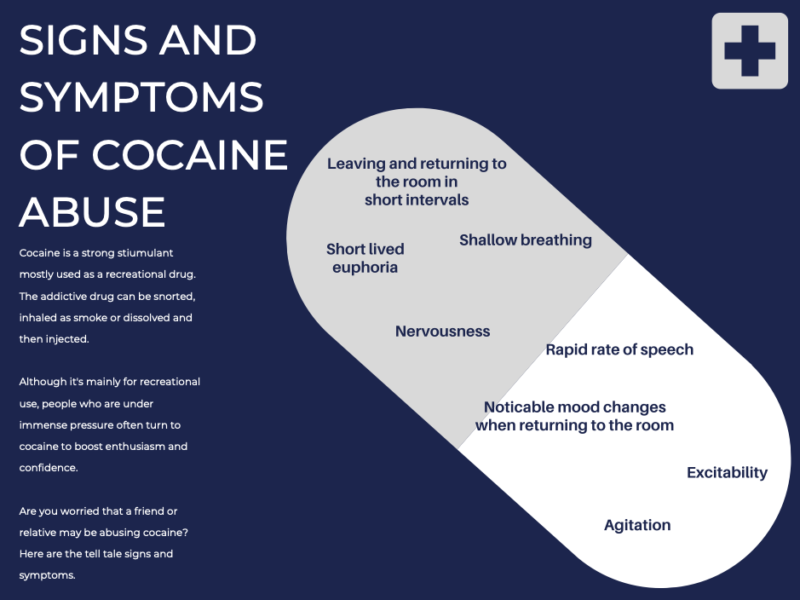It’s mid-afternoon, and James* needs to take another hit. He’s on his second line of cocaine and doesn’t plan to stop there. As head chef, pressure mounts on the 42-year-old to cook a plethora of dishes whilst monitoring eight other chefs during his 16-hour shift.
He begins: “When I’m stressed in the kitchen, cocaine helps me through it. Sometimes I’ll work 60 to 70-hour weeks. My body will be tired, my mind will be tired, but that’s no excuse. I first turned to cocaine to boost my energy during the second week as head chef. Everybody in the kitchen was doing it, so I thought I’d give it a go. Now, I rarely go a shift without doing a line or two. Being high on cocaine boosts enthusiasm and makes me feel confident, so when I do it my motivation peaks.”
James isn’t the only professional believing he needs cocaine to make it through the day. A test carried out by Concateno, a drug testing service, found that one in 30 employees tested at work had taken narcotics – one of the most common drugs being cocaine. Cocaine use initially declined in 2009 but has since been increasing year on year.

The general stereotype of a cocaine user is a young, free-spirited party animal. This common recreational drug is most popular amongst 25-34-year-old individuals, mainly with disposable income. Yet the popularity of the class A substance has spiked amongst the middle-aged.
The number of middle-aged people receiving hospital treatment after taking drugs has quadrupled in the past decade. These baby boomers often continue to replicate their past hedonistic lifestyle of drugs, partying and booze. On top of this desire are pressures of work and family, turning them to non-conventional means of coping.
Psychotherapist and rehab clinic worker Adrianna Irvine said: “People set themselves up with expectations of what life will be like, then you get there and it’s not like that. It’s a combination of things which we’re not that willing to feel – slightly depressed, undervalued and taken for granted. The kids or the partner might’ve left.
“The advent of drugs seems to supply a quick relief, but it will turn into a long-term problem. It’s cheap, and you can then drink as much as you like because the alcoholic hangover isn’t so bad. You’ll also eat less, so you might initially lose weight, then by that that time you’re hooked.”
Cocaine use at middle class parties has been recognised and criticised by the Home Secretary, Sajid Javid. This is something Ms Irvine has experienced.
She continued: “I was at a dinner party years ago when I was working at Holloway Prison, and noticed a finance worker. He was full of opinions: all about global warming, justice, and veganism. I noticed he wasn’t eating very much, then he kept disappearing to the bathroom and would rub his nose as he came back. Eventually, he looked at me and said, ‘You’re very quiet, you know, are you vegan?’ I took a deep breath and said, ‘You can’t be vegan and do cocaine. Surely you know it’s not indigenous.’

“He looked at me confused so I said, ‘I work with drug mules who bring it into the country, often in condoms in their stomachs which can explode. I know two young women in their early 20’s with colostomy bags because they supplied cocaine for people like you, all while you’re sitting at a lovely dinner party talking about climate change and being vegan.’
“I wasn’t invited back. He needed to know it is imported, and his naive antics encourage human trafficking of the worst order.”
In recent years, the Albanian Mafia have taken control of the UK’s remunerative cocaine market. According to the National Crime Agency, the Mafia negotiate directly with international importers, creating purer and more affordable powder. Columbia, Peru and Bolivia produce the most cocaine, with production also increasing in Latin America. Cocaine is at its cheapest, costing approximately £40 for a gram, which is half of the cost compared to twenty years ago.
Cocaine use appears to be the most common amongst middle class men compared to women. 448 men were charged with cocaine possession in the Thames Valley area in 2018/2019, compared to only 49 females. The amount of people charged with possession has increased by 32% in the first quarter from 2018-2019, according to data from the Met.
The Metropolitan Police Commissioner, Cressida Dick, has criticised middle-class drug users who “think it is a victimless crime, taking cocaine at middle-class parties.” The Home Secretary, Sajid Javid, also agrees that wealthy users are “not innocent”.
The increase in drug abuse by the middle-aged has led to a spike in deaths. In 2013 alone, 12,000 baby boomers died due to an accidental drug overdose. As a result, the Royal College of Psychiatrists have said the NHS are struggling to cope.

Figures show that cocaine use by wealthy households has peaked, being the highest in a decade. In 2017/2018, 3.4% of people living in households with an income of at least £50,000 have taken a drug of powder form within the last year.
The Justice Secretary, David Gauke, said middle-class users should “feel a degree of guilt responsibility” seeing teenagers being murdered in rough areas of London.
In a recent speech, the Home Secretary Sajid Javid stated a government review into how drugs fuel serious violence will bring home to middle-class drug users that they are part of the problem.
After falling for several years, knife crime in England and Wales has also peaked. There were over 39,000 knife crime offences in the 12-month period ending September 2018, according to the Home Office. This is a two-thirds increase from the lowest amount of offences, in 2014, where there were around 23,000. Out of the 44 forces police data was sourced from, 42 recorded a rise in knife crime.
Sajid Javid continued: “They may never set foot in a deprived area. They may never see an act of serious violence, but their illicit habits are adding fuel to the fire that is engulfing our communities.”
County Lines networks, where criminals exploit children into smuggling drugs from cities into rural areas, are an ongoing issue for the police. The Children’s Commissioner estimates that around 46,000 British children are involved in gang activity.

Overall drug use across the UK has increased, with one in eleven adults admitting having taken drugs in the past year. One in 29 adults admit to having taken a Class A drug which includes cocaine, crack cocaine, heroin, ecstasy, MDMA and crystal meth.
Cannabis continues to be the most used drug nationwide, with 7.2% of UK adults admitting to using it in the past year. The class B drug is also prescribed to help with medical conditions such as Alzheimer’s, insomnia and arthritis. In 2016, the United Kingdom’s cannabis production doubled to 95 tonnes, making the UK the supplier of nearly half of the world’s legal cannabis.
Milton Keynes based drug dealer, Sidney*,sells cannabis, cocaine and MDMA. He says that half of his clientele are middle aged professionals. Reoccurring client, 42-year-old Phillip*, buys an ounce of cocaine from him fortnightly to supply cocaine to his co-workers.
Senior recruitment consultant, Richard*, sees cocaine abuse at work daily. He said: “There is an image attached to working in recruitment, very much like working on the stock trading floor, so there’s lots of power dressing. They walk around in blue three-piece suits, high on cocaine, like they’re the Wolf of Milton Keynes.
“Nobody prevents drug use at work because they are glorified. You know who uses them, and often it’s the managers. I could openly tell my line manager I’m having a tough day after being out all night, knowing his reply would be, ‘well at least you made it in.’”

Ex Police Drug Squad member, Glenn Clements, spent five years taking out drug dealers that supply the middle class with their recreational drugs. Former Detective Sergeant Clements worked internationally on a number of undercover operations. He said: “As soon as a dealer is arrested, they are replaced by another in the gang. I used to drive an articulated lorry up into the mountains in Morocco and bring back two tonnes of Cannabis Resin wrapped in polythene. They would put 20 tonnes of apples and oranges on board to put off the sniffer dogs. They had no clue I was an undercover cop.
“I was working for Scotland Yard, and as a commercial pilot the first flying job I did for them was to fly in 2.2 million pounds of heroin. I landed at a disused airfield in Wales and put the drugs into an abandoned vehicle and flew off. The surveillance team then took over. I did that for five years, until I had a gun put to my head in Holland.
“Drug users have no idea about the lengths people go to supply their drugs.”
Users aren’t just unaware of how their drugs are supplied; they are often unaware of what’s been added during production.
Cocaine derives from the leaves of the coca plant which is native to South America. Laboratories then soak the coca leaves in gasoline amongst other chemicals to extract the coca base from the leaves. The base is poured into brick moulds, the water pressed out, creating a brick of cocaine. Cocaine bricks are then shipped out to countries across the world.
Cutting agents, which are major impurities, are added to the brick meaning less cocaine is sold for more money. Common cocaine additives include laundry detergent, laxatives, boric acid and local dental aesthetic. These additives are all of white powder form, meaning users cannot distinguish what the cocaine has been cut with.

Once snorted or smoked, the powder stimulant raises the brain’s level of dopamine – the feel-good neurotransmitter. Although the drug provides pleasure, it increases heart rate and blood pressure, whilst preventing the arteries from pumping blood to the heart. As a result, it damages the heart and blood vessels, and has been known to cause sudden death.

The short burst of euphoria users experience when high is often followed by a depressive desire for more. Common side-effects of short-term cocaine use include insomnia, hyper-stimulation, nausea, hallucinations, introversion, anxiety and loss of appetite.
Although short-term effects fade, often long-term side effects of cocaine abuse are irreversible. The long-term damage includes destruction of tissues in the nose, severe tooth decay, psychosis, severe depression, auditory/ tactile hallucinations and liver, kidney and lung damage.
If somebody is taking cocaine in the workplace, it may seem they are motivated and working hard. But ultimately, it will affect their long-term performance and personal health. Signs that a co-worker may be abusing cocaine include agitation, leaving and returning the room frequently, bursts of motivation and euphoria, nervousness and shallow breathing.
With the popularity of cocaine at its peak, there is no surprise that Britain’s drug market is estimated to be worth £6bn per year. Around 30 tonnes of cocaine is imported annually. Current Security Minister Ben Wallace has warned that the UK is “fast becoming the biggest consumer” of cocaine in Europe.
With this in mind, people have campaigned about the legalisation of all drugs including “hard” drugs like cocaine. Legalisation of cannabis and psychedelics has already made its way into countries including The Netherlands, Portugal and Jamaica.
To prevent drug smuggling, county lines and dangerous chemicals being added to cocaine, legalisation could be the only safe option. Access to pure drugs with set dosages could prevent overdoses and other stimulant related deaths.
Senior Policy Analyst at the Transform Drug Policy Foundation, Steve Rolles, believes global regulation and legalisation of “uppers” is crucial. He says: “The danger of a particular drug is the reason to regulate it, not the reason to run away from it.
“For me, it doesn’t really matter how dangerous a particular drug is. If people are using it, we have to accept that prohibition is still going to make it more dangerous and regulation is going to make it safer. It’s a fundamentally pragmatic position.”
*their name has been changed to protect their identities




